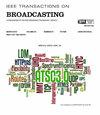用于深度图像复原的 RGB 深度边界错位识别与校正
IF 3.2
1区 计算机科学
Q2 ENGINEERING, ELECTRICAL & ELECTRONIC
引用次数: 0
摘要
由于深度传感器的限制,原始深度图像通常在物体边界附近包含大量错误像素。这会导致 RGB 和深度对之间的物体边界错位。大多数现有方法都没有明确研究这种 RGB-Depth 错位问题。因此,深度边界无法准确恢复。本文基于引导滤波器(GF)开发了一个简单而有效的模型,用于识别原始深度图像中错位的物体边界。在参考 RGB 图像的引导下使用 GF 滤波原始深度图像,随着 GF 窗口大小的增加,RGB 图像的结构可逐步转移到滤波深度图像中。因此,原始深度图像中错位的物体边界可以从大尺寸和小尺寸 GF 过滤深度图像的残差中识别出来。该模型被嵌入马尔可夫随机场,以修正错位的物体边界。它被限制在深度边界周围的固定宽度区域,以避免纹理复制伪影。优化问题以迭代方式高效解决。在三个 RGB 深度数据集上的定量和视觉结果证实,与最近基于优化或基于学习的基线方法相比,所提出的方法取得了最佳效果。此外,提出的方法还有效地应用于无参照深度质量评估、深度超分辨率和深度估计增强。本文章由计算机程序翻译,如有差异,请以英文原文为准。
Misaligned RGB-Depth Boundary Identification and Correction for Depth Image Recovery
Raw depth images generally contain a large number of erroneous pixels near object boundaries due to the limitation of depth sensors. It induces misalignment of object boundaries between RGB and depth pairs. Most existing methods do not explicitly study such RGB-Depth misalignment problem. Thereby, depth boundaries cannot be accurately recovered. In this paper, a simple yet effective model is developed based on the guided filter (GF) to identify misaligned object boundaries of a raw depth image. Using GF to filter a raw depth image with the guidance of a reference RGB image, structure of the RGB image can be progressively transferred to filtered depth images as the window size of GF increases. Therefore, misaligned object boundaries in raw depth image can be identified from residuals of filtered depth images from large-size and small-size GFs. The model is embedded into Markov random field to correct misaligned object boundaries. It is restricted in fixed-width regions around depth boundaries to avoid texture-copy artifacts. The optimization problem is solved efficiently in an iterative way. Quantitative and visual results on three RGB-Depth datasets verify that the proposed method achieves the best results compared with recent optimization-based or learning-based baselines. In addition, the proposed method is effectively applied in no-reference depth quality assessment, depth super-resolution, and depth estimation enhancement.
求助全文
通过发布文献求助,成功后即可免费获取论文全文。
去求助
来源期刊

IEEE Transactions on Broadcasting
工程技术-电信学
CiteScore
9.40
自引率
31.10%
发文量
79
审稿时长
6-12 weeks
期刊介绍:
The Society’s Field of Interest is “Devices, equipment, techniques and systems related to broadcast technology, including the production, distribution, transmission, and propagation aspects.” In addition to this formal FOI statement, which is used to provide guidance to the Publications Committee in the selection of content, the AdCom has further resolved that “broadcast systems includes all aspects of transmission, propagation, and reception.”
 求助内容:
求助内容: 应助结果提醒方式:
应助结果提醒方式:


